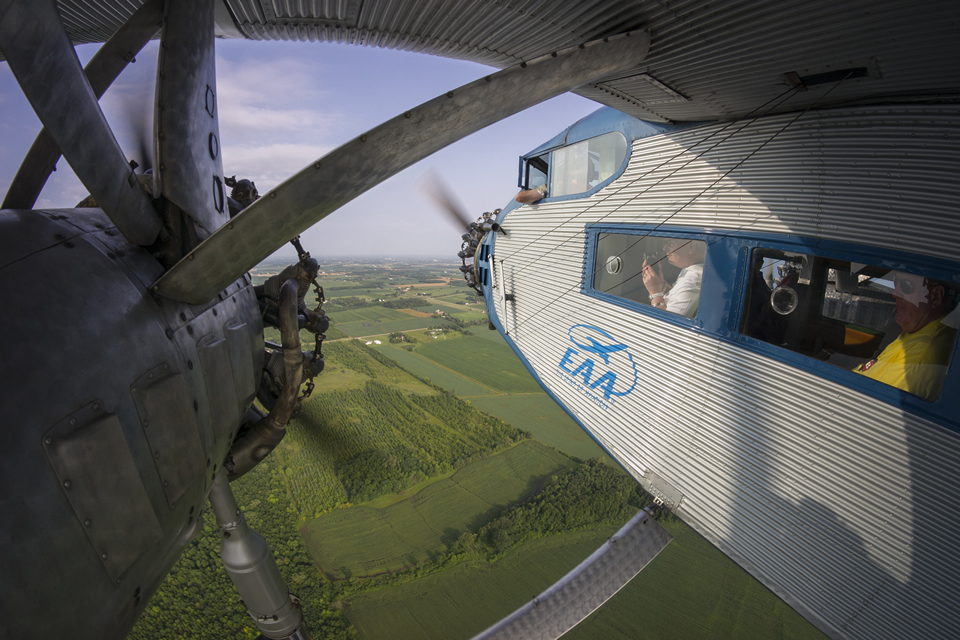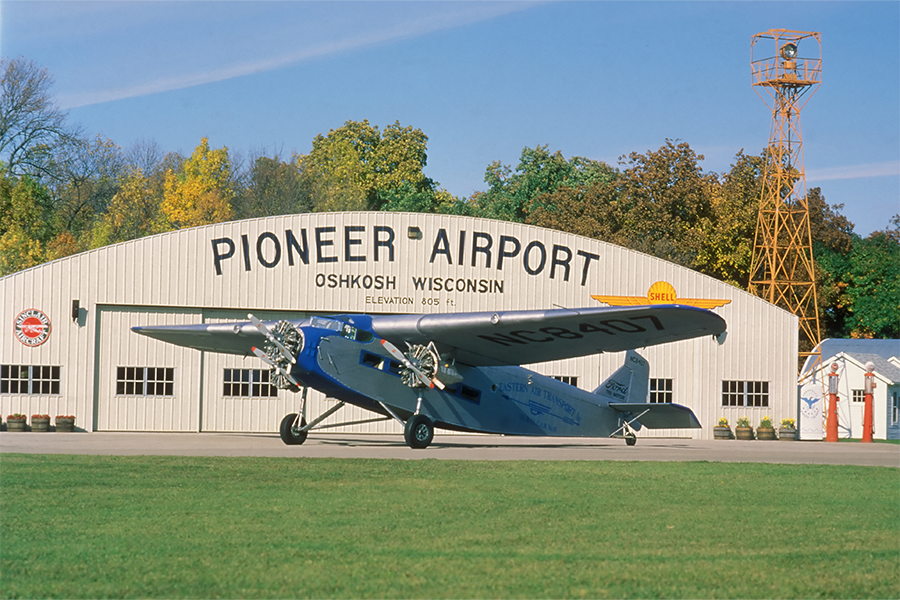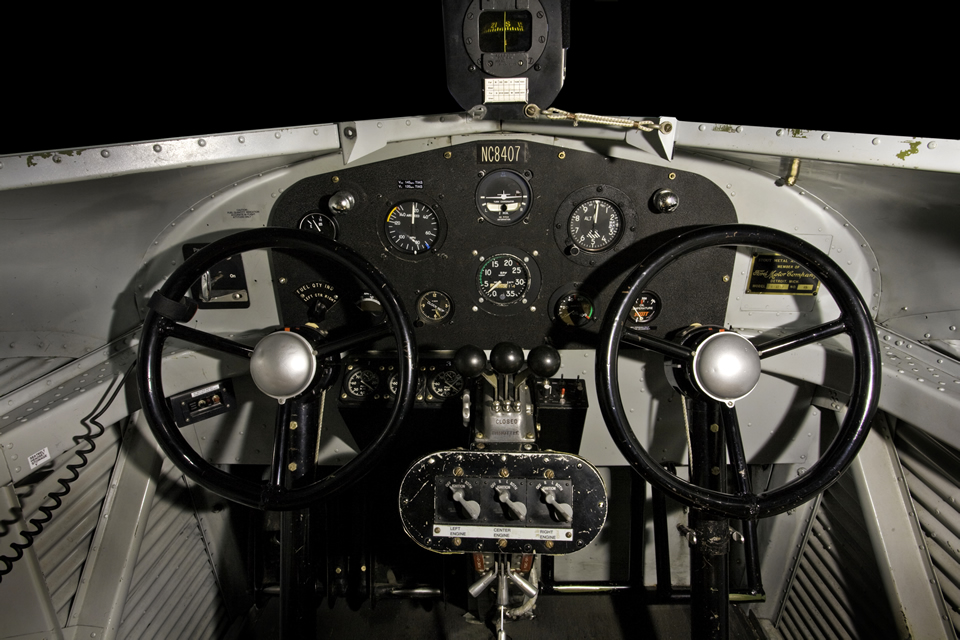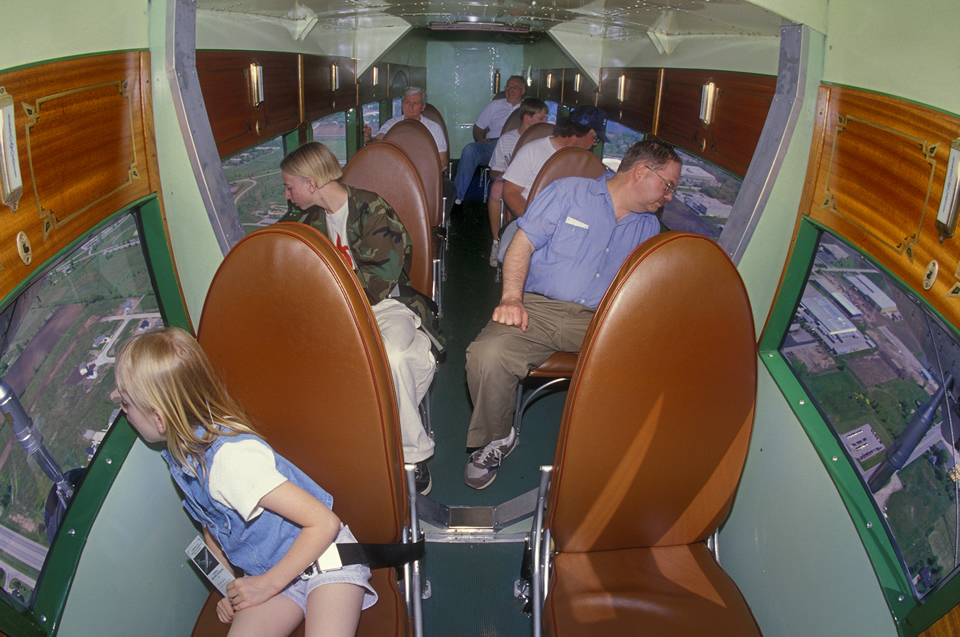
EAA Ford Tri-Motor Tour
Step back into the vibrant era of the Roaring '20s and experience the thrill of flight aboard the legendary EAA Ford Tri-Motor. As the pioneer of luxury air travel, the Ford Tri-Motor revolutionized global transportation, ushering in the golden age of commercial aviation. Embark on our tour, guided by passionate volunteers eager to share the captivating stories of this historic aircraft.
Our tour, generously supported by our chapters and volunteers, welcomes families to explore the intricacies of the Ford Tri-Motor and learn about our organization's mission. Viewing the aircraft is complimentary, so don't forget to bring your camera along.
Proceeds from the Ford Tri-Motor tour directly contribute to covering maintenance and operational expenses, ensuring the continued flight of the beloved "Tin Goose" for generations to come.
For your comfort and safety, we recommend wearing hearing protection near the aircraft, and earplugs will be provided for your convenience.
Join us on this extraordinary journey through aviation history, where the spirit of adventure and innovation takes flight aboard the timeless Ford Tri-Motor.
Ford Tri-Motor Experience Pricing
- Adults $105
- Children (17 and Under) $85
Upcoming Ford Tri-Motor Flights
| May 02 - May 04, 2025 | Reserve, LA United States | |
| May 09 - May 11, 2025 | Bolton, MS United States | |
| May 16 - May 18, 2025 | Millington, TN United States | |
| May 23 - May 25, 2025 | Mayfield, KY United States | |
| May 30 - June 01, 2025 | Springfield, IL United States | |
| June 06 - June 08, 2025 | Bolingbrook, IL United States | |
| June 13 - June 15, 2025 | Madison, WI United States | |
| June 20 - June 22, 2025 | St. Cloud, MN United States | |
| July 21 - July 27, 2025 | AirVenture 2025, WI United States |
More Stops Coming Soon!
Frequently Asked Questions
How many people does the Tri-Motor carry?
EAA's Ford Tri-Motor 4-AT can carry up to eight passengers at a time. For an additional fee, co-pilot seats are available on a first-come, first-serve basis. Every seat is a window seat, which allows every passenger to enjoy the scenic view.
Can I bring a camera?
Yes, you are encouraged to bring cameras and camcorders on board.
Are there any special considerations for children?
An adult must accompany children under the age of 16. Children under the age of 2 can be carried free of charge in an adult's lap.
How accessible is the airplane?
Access to the airplane is easy and not normally a problem for elderly or mobility-limited people. Two normal-sized steps are used to enter the cabin. Seats are individual (no double seats) and separated by an aisle. Seatbelt extensions are available.
Is a waiver of liability required?
Yes, a signed waiver must be signed by all passengers.
Parents are required to sign a waiver for each minor under the age of 18.
What if I have other questions?
Please e-mail flytheford@eaa.org or call us toll-free at (877)-952-5395.
How long is the flight?
Each Flight Experience is roughly about 15 minutes long.
Ford Tri-Motor Photos
Take a step back into aviation history with an exclusive glimpse into EAA’s iconic Ford 4-AT-E Tri-Motor. Marvel at the blend of innovation and engineering prowess as we delve into the details of this historic airliner.
The Ford Tri-Motor, affectionately dubbed the "Tin Goose," stands as a testament to Henry Ford's relentless pursuit of excellence in transportation. The Tri-Motor represents a pivotal era in aviation, when commercial airline travel truly became a practical reality.
As you explore the Tri-Motor's interior, imagine yourself transported back in time to an era of glamour and adventure. You’ll appreciate the meticulous craftsmanship that went into crafting the spacious cabin, adorned with plush seating and elegant fixtures reminiscent of a bygone era. Feel the echoes of excitement and anticipation that once filled the airplane as passengers embarked on thrilling journeys to distant destinations.
History of the Ford Tri-Motor 4-AT-E
Henry Ford revolutionized transportation with his iconic Model T "Tin Lizzie" from 1909 to 1926, mobilizing millions of Americans. But his innovation didn't stop there. Recognizing the potential of air travel post-World War I, Ford introduced the Tri-Motor, designed by Bill Stout and affectionately known as the "Tin Goose," aimed at creating a new market for airline travel.
With its three engines and passenger-focused features like enclosed cabins, Ford's Tri-Motor addressed concerns about reliability and comfort, challenging the skepticism of pilots accustomed to open cockpits. From 1926 to 1933, Ford Motor Company produced 199 Tri-Motors, with EAA's model 4-AT-E being a standout, first flying in 1929 and later becoming the flagship of Eastern Air Transport, precursor to Eastern Airlines.
EAA’s Tri-Motor's journey didn't end there. It ventured to Cuba, served the Dominican Republic, and underwent various transformations in the United States — from crop dusting to firefighting to carrying smoke jumpers. Surviving a harrowing thunderstorm in 1973, the Tri-Motor was eventually restored by EAA staff, volunteers, and Ford Tri-Motor operators nationwide after an intensive 12-year effort.
Its triumphant return to the sky in 1985 at the EAA fly-in convention marked a new chapter. Displayed briefly in the EAA Aviation Museum, the Tri-Motor resumed its mission of enchanting passengers on annual tours across the United States, embodying the spirit of innovation and resilience that defined Henry Ford's legacy.




